Every October, when the air begins to crisp and the sun grows shy, the goats, big and small, arrive. They dot the grassy hillside of Lone Mountain, the steep patch of land behind the University of San Francisco. The goats alternate between munching on overgrown vegetation so long it pokes through the endless chain-link fence, and wrestling with their herd playmates, bleating as they jump into each other. They stay for about a week before moving onto another area of the city in need of natural weed control, or returning to their permanent home in China Basin.
This is my favorite time of year. I reroute my commute to incorporate the goats. I park near the hill so I can watch them eat and play before retreating to my apartment a few blocks away. And if I’m lucky, I’ll catch an employee from City Grazing, the non-profit that oversees this program, talking to the animals, identifying each by name.
This little joy made me look differently at my dairy products, like the yogurt and cheese that are staples in my refrigerator. I never paid much attention to the packaging before I encountered actual goats in my neighborhood. So I became curious about the goat on the logo of my yogurt container. Does it have a name? What is his or her story?
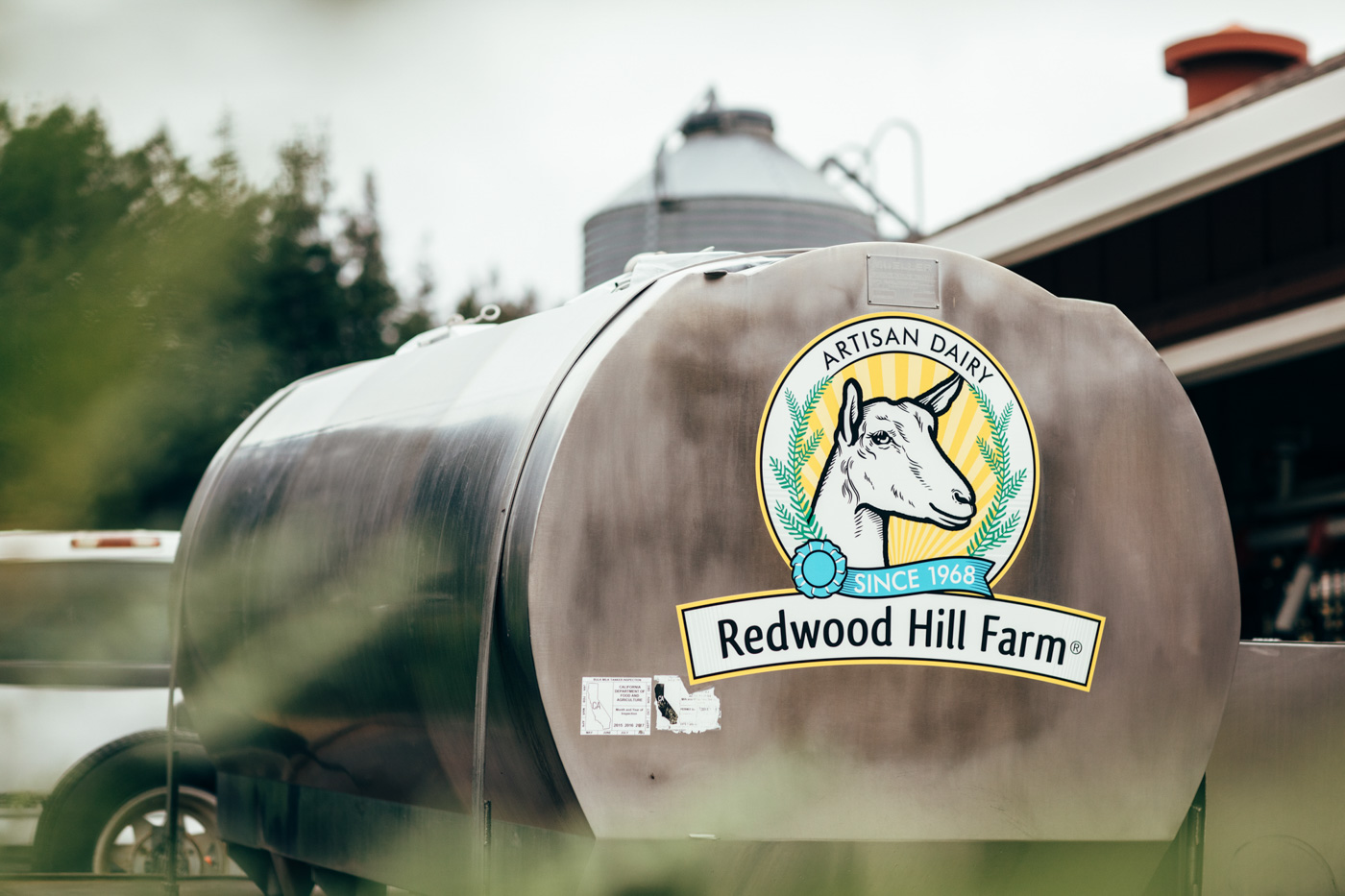
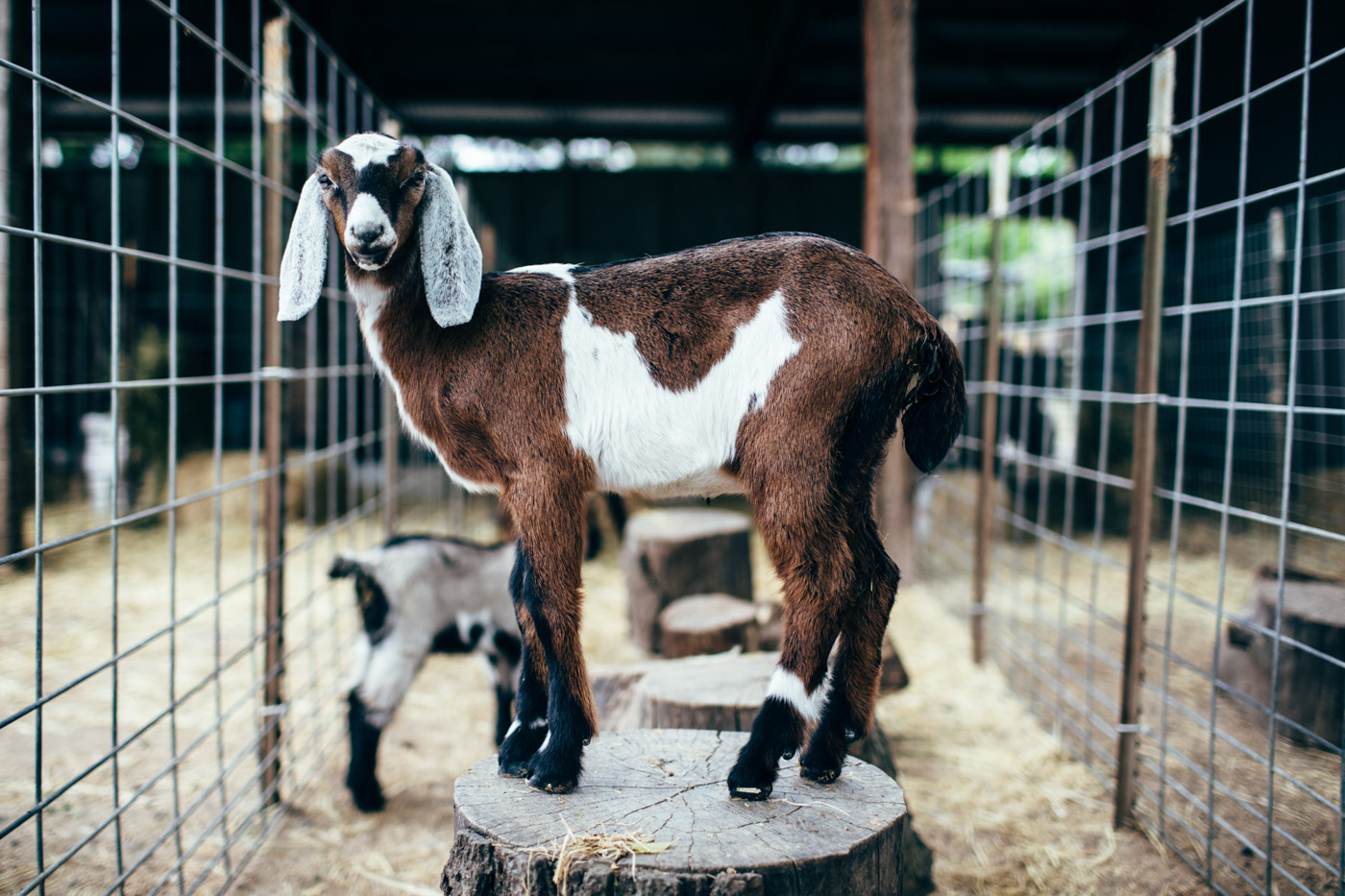
These questions took me to Redwood Hill Farm, the place that gave us the nation’s first goat yogurt in 1982. Located in Sonoma County, California, the farm was founded in 1968 by Kenneth and Cynthia Bice and is now run by their daughter, Jennifer. The farm has been making milk for over fifty years. The health of their animals and the land on which they live are at the center of the farm’s mission; their products are certified humane and the farm runs on renewable energy.
It’s a short ride over the Golden Gate Bridge to Sonoma County; it’s about an hour to get there from the city, and the drive is dotted with vineyards and cyclists. Lawns are lined with neat rows of grapes, signaling we’re in one of the most fertile parts of the country.
When I arrive, I’m led directly to the doe barn. I’m given a tour on the way, passing by the kid barn where the baby goats live, the garden where beers hops are grown, the chicken run, and the olive trees. When I reach the barn, Jennifer is standing among the adult goats. Her hands are outstretched, allowing them to gently nibble on her fingers. She is comfortable and calm.
She then invites me into the pen where I’m welcomed by the curious goats. The farm opens its doors to the public, offering farm tours and cuddle sessions, where people can snuggle with baby goats. The kids are eager to get to know me better; they nip at the bottom of my jacket and my shoelaces, following me as I move around the pen. Jennifer tells me a few of their names and points out the four breeds they keep on the farm: alpine, lamancha, nubian and saanen. Each breed is different. The patterns on the alpine’s coats vary and they are the most adaptable; lamanchas originally came from Spain and have very short ears; nubians have long, floppy ears and are the most popular breed in the U.S.; and saanens are usually all-white and were the first breed imported from Switzerland to the States. There are eight breeds of dairy goats in total, but Jennifer prefers the milk of these four.
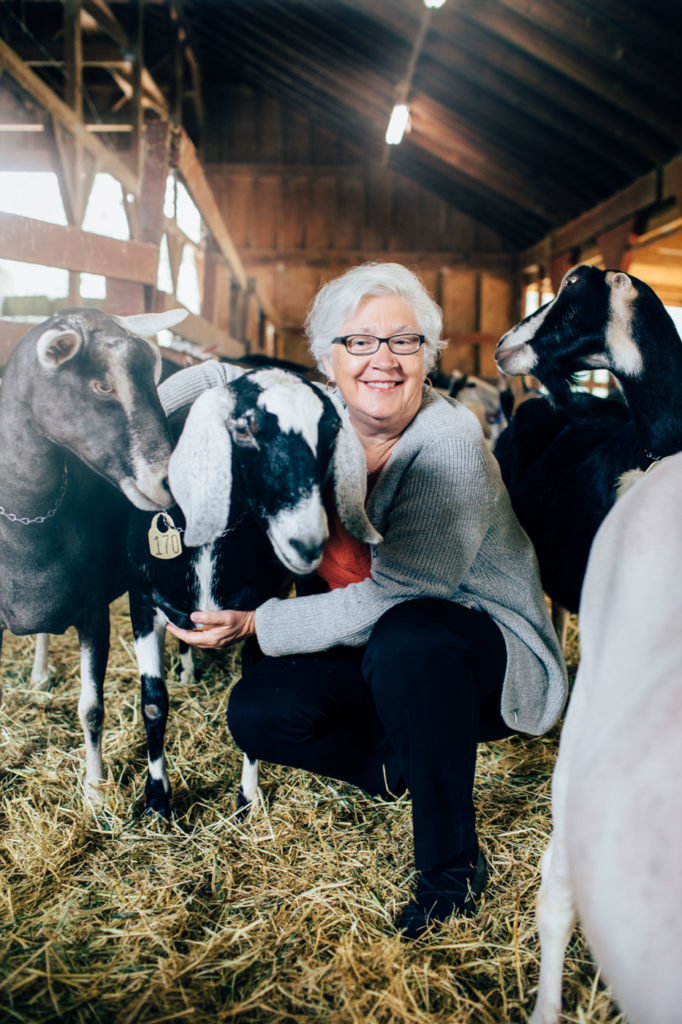
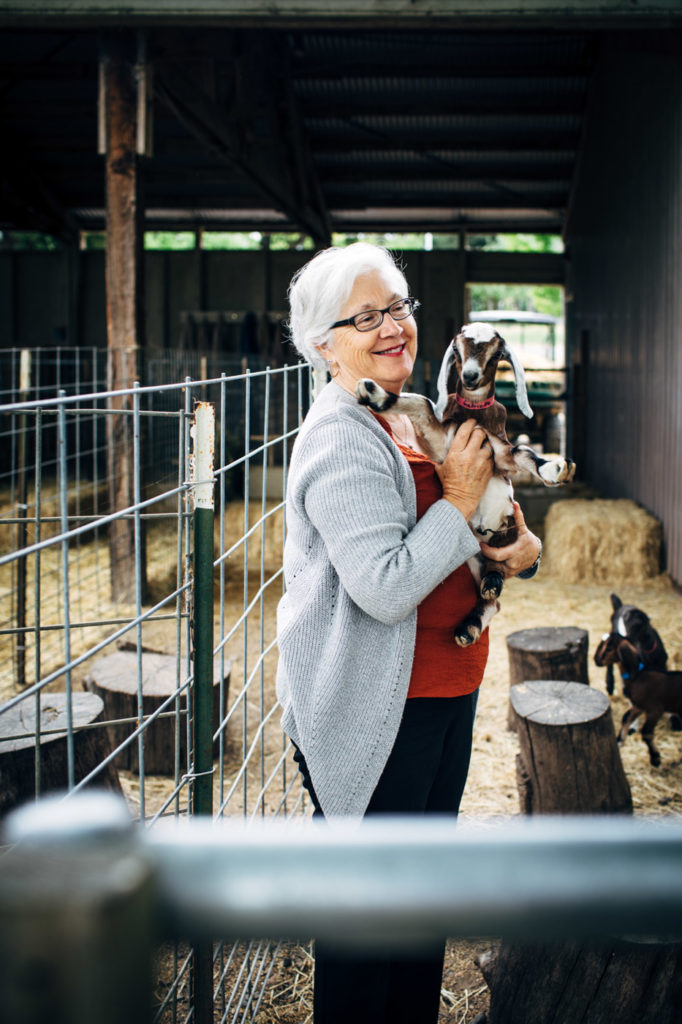
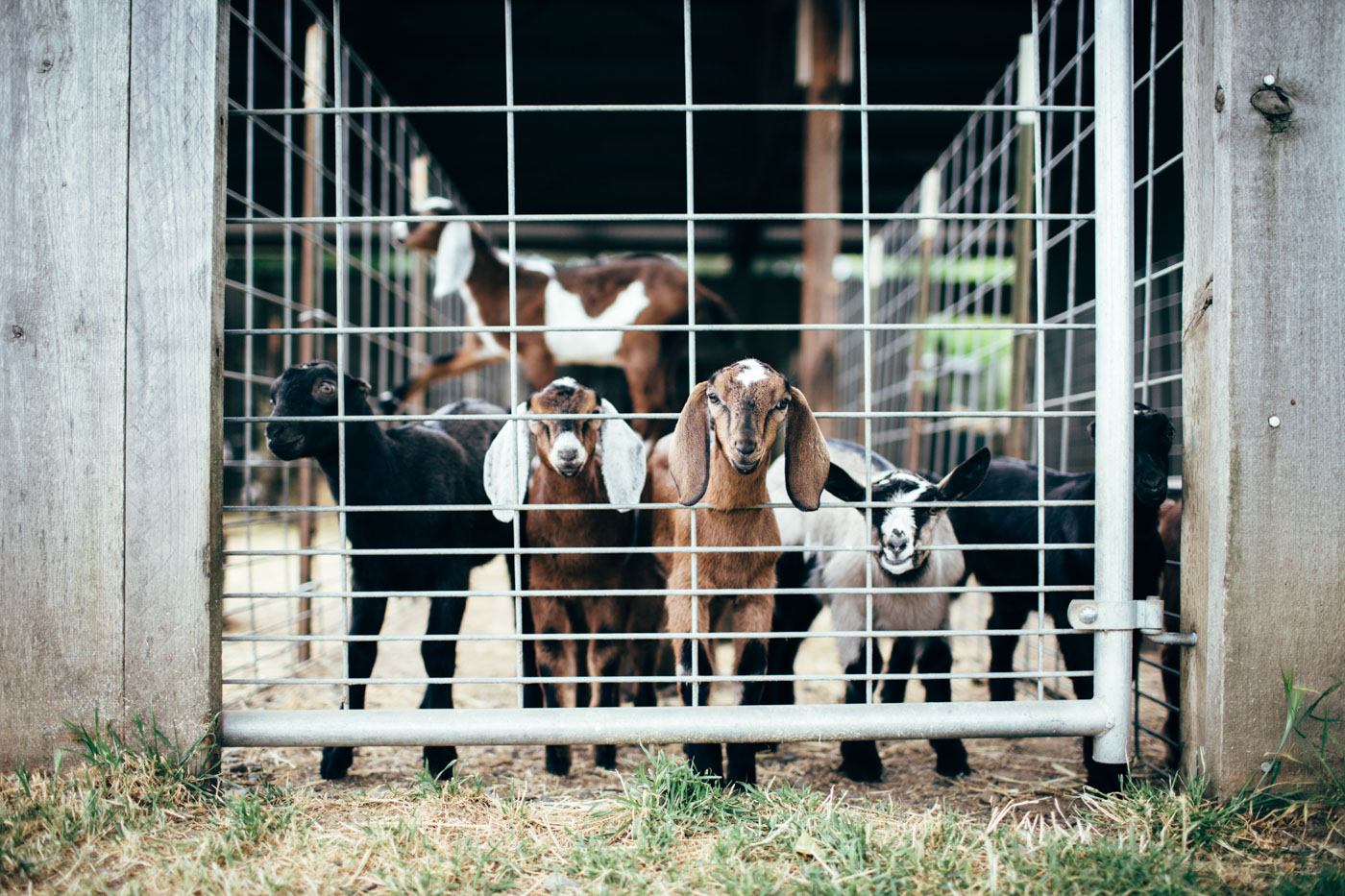
A few of the does have just given birth—they are marked by a green collar—and are taking time to rest. “Generally, they have their babies in the spring and then they milk for about ten months. They have two months off for rest and rejuvenation,” Jennifer explains. Once ready, they rejoin the other does for milking. The goats are milked twice a day—once in the morning and once in the evening. Bice explains milk production is seasonal, which relates to their birthing cycle, and that there are more births in the summer because there are more goats on the farm.
Excess goat milk is a large part of the reason the Bices started Redwood Hill Farm. In 1964, Jennifer’s parents moved the family from Los Angeles to Sonoma County. Kenneth and Cynthia were interested in homesteading, which was growing in popularity on the heels of World War II. “There was this 1940s book that my parents had called The ‘Have-More’ Plan,” she says. “It was kind of a bible. It had instructions for planting an orchard and how to build a milking stanchion for the goats.” The family bought two acres of land and ducks, chickens, rabbits, pigs, sheep and goats to go along with it. Their five goats eventually produced more milk than they could drink, and the family began selling it to neighbors.
“In the 1960s, goats were not really considered bona fide agriculture,” Jennifer says. “It was really the start of the natural food movement that caused goats to become more popular, both with the back-to-the-landers who wanted to have milk for their families, and for the new health and natural food stores, in addition to their neighbors. That’s how we got started.” She and her mother would bottle goat milk in glass bottles and deliver them to local health food stores. The Bice family then built a milking parlor on the farm and in 1970, they introduced the first goat kefir milk—a cultured, probiotic milk product that is thicker in texture—to the market.
Jennifer continued to work with goats through college. Eventually, she met her late husband Steven, and the goats became a central part of their life together. “Steven and I wanted to have a business and make the animals our work,” she says. They got their chance in 1978 when her parents decided to move to Hawaii. They took most of Jennifer’s siblings with them (she is the oldest of ten), but she stayed to take over the farm. She and Steven each invested $200 into the farm and gave it a go.
They realized they needed to move beyond goat milk. “At that point, very few people used goat dairy,” she remembers. “We figured people who were drinking the milk would eat goat cheese and yogurt,” she says. In 1980, they started making cheese, beginning with raw goat feta. And in 1982, Redwood Hill Farm introduced the nation’s first goat yogurt, the product for which they are most known today. Another part of the business model that remains today is the sale of some of their baby goats to dairy farms around the U.S.

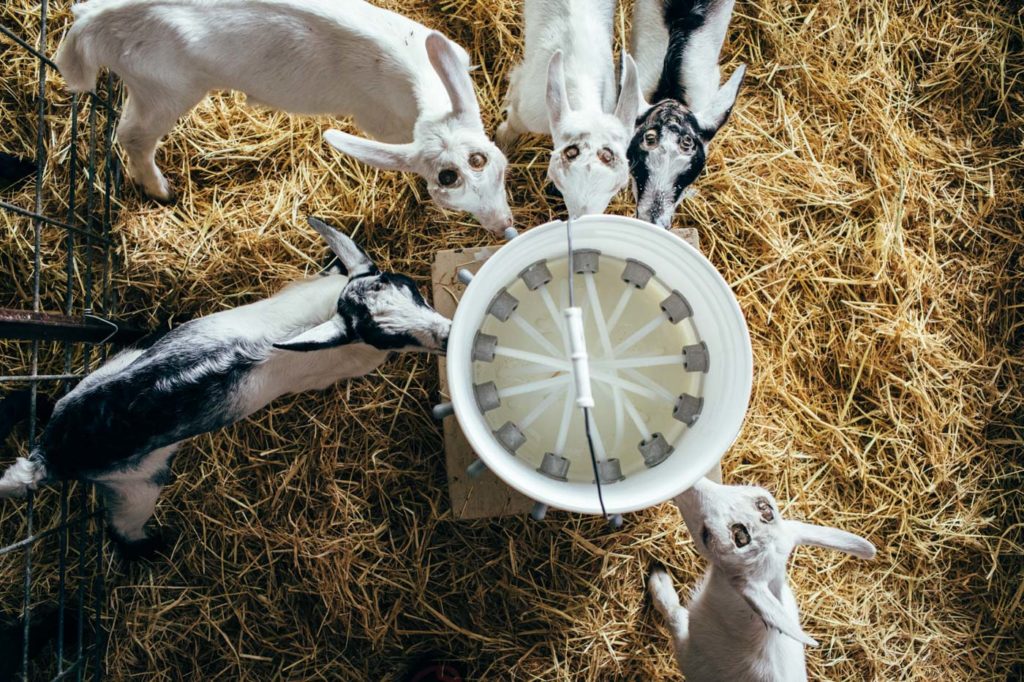
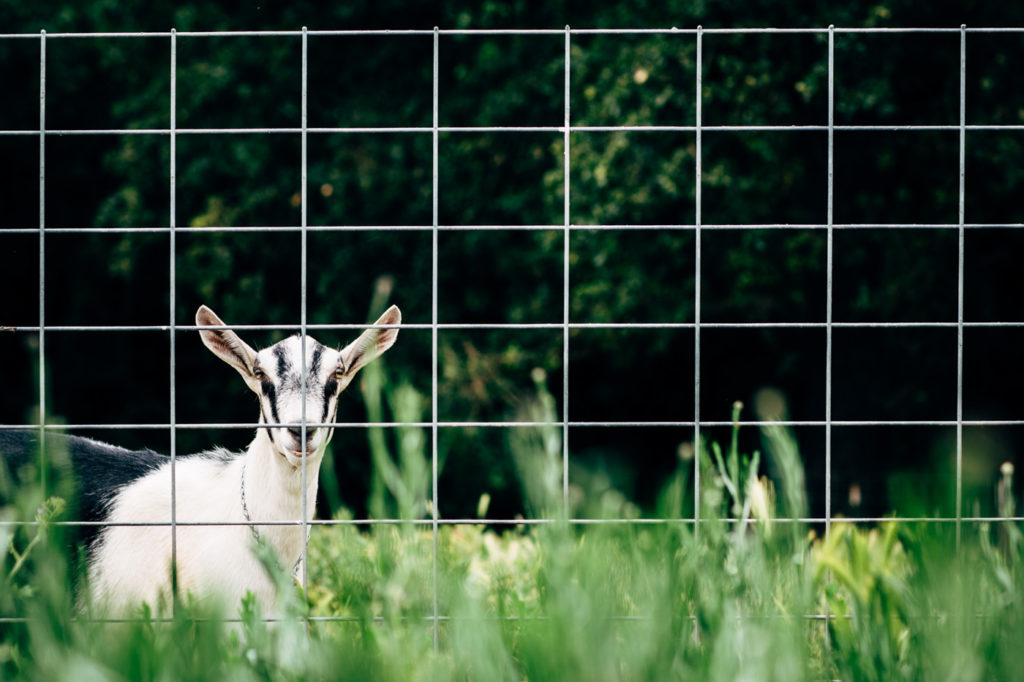
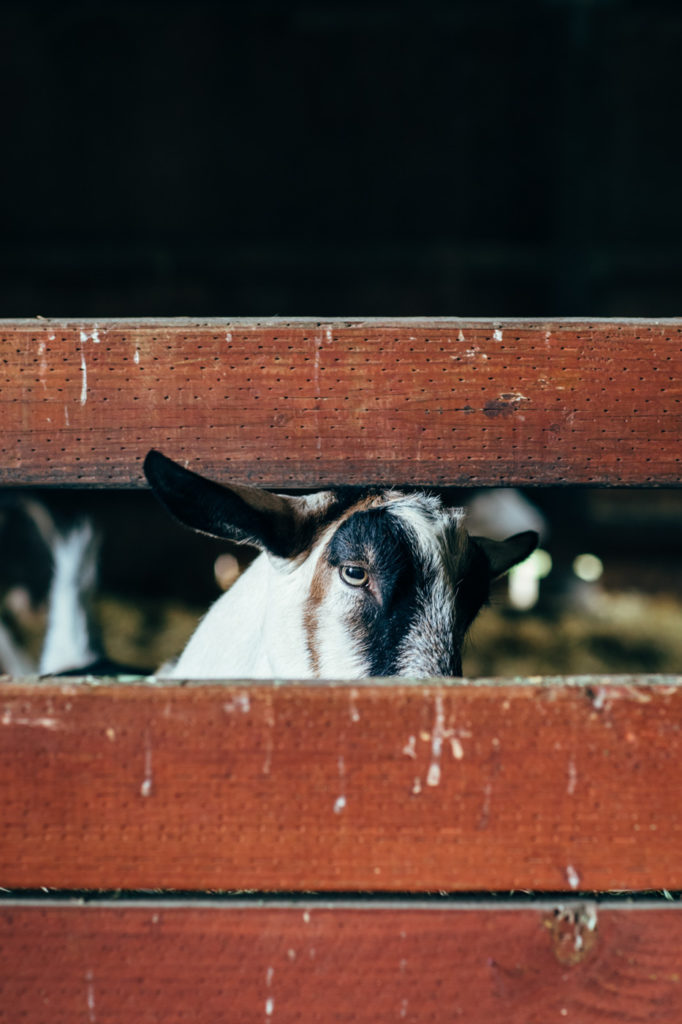
Back on the farm, Jennifer invites me to the milking parlor to see where the goats spend part of their day. The parlor is small, immaculately clean, and has minimal machinery. There is a metal tank of raw goat milk in the center, and she lifts the lid to show me the product of the morning milking. This will all become yogurt.
Although their yogurt is now distributed nationwide, it took some time to get customers comfortable with goat dairy. “People didn’t know what it was,” Jennifer says. They honed their recipe so it had texture comparable to cow yogurt, and was more relatable to consumers. The trick was to combine the milk from different breeds of goats. “Nubians and lamanchas—what we have—are more like the Jerseys of the cow world. They have a higher butter fat and creaminess to the milk. The alpines and saanens give a little higher volume, but mid-range butter fat. We find by mixing the milk we have a creamy, butter fat content which gives it mouthfeel and flavor,” she explains.
Yogurt extends the life of milk, just like with cheese. This was also the impetus for the development of Redwood Hill Farm’s line of cheeses, which now includes a regular and smoked cheddar. But when the farm was first starting out, they began with feta. They initially had to outsource the cheese production because they couldn’t afford to build a creamery on-site.
Goat cheese may be ubiquitous now, but like yogurt, it took time for the public to embrace it. So they relied on restaurants for help. “Food magazines were always talking about the cheese. In the 1970s, the start of the farm-to-table movement, celebrity chefs started using goat cheese,” says Jennifer. “I really credit the chefs for breaking through.”
Redwood Hill Farm eventually built a creamery after expanding from three to ten acres. Jennifer became the primary cheesemaker, and was later honored by the American Cheese Society as one of the eight goat cheese pioneers in the U.S. for her work.
Despite the industry acclaim for their cheese, the Bices closed the creamery two years ago. “It was less than five percent of our business,” Jennifer explains. “Our cultured products—like yogurt—continued to grow, and we needed the space for that.” Their cheddars will remain on the market until they sell out, which Jennifer expects will be within the next two years. Jennifer has since converted the facility into a farm house where she now lives, with the building still part of the farm’s life.
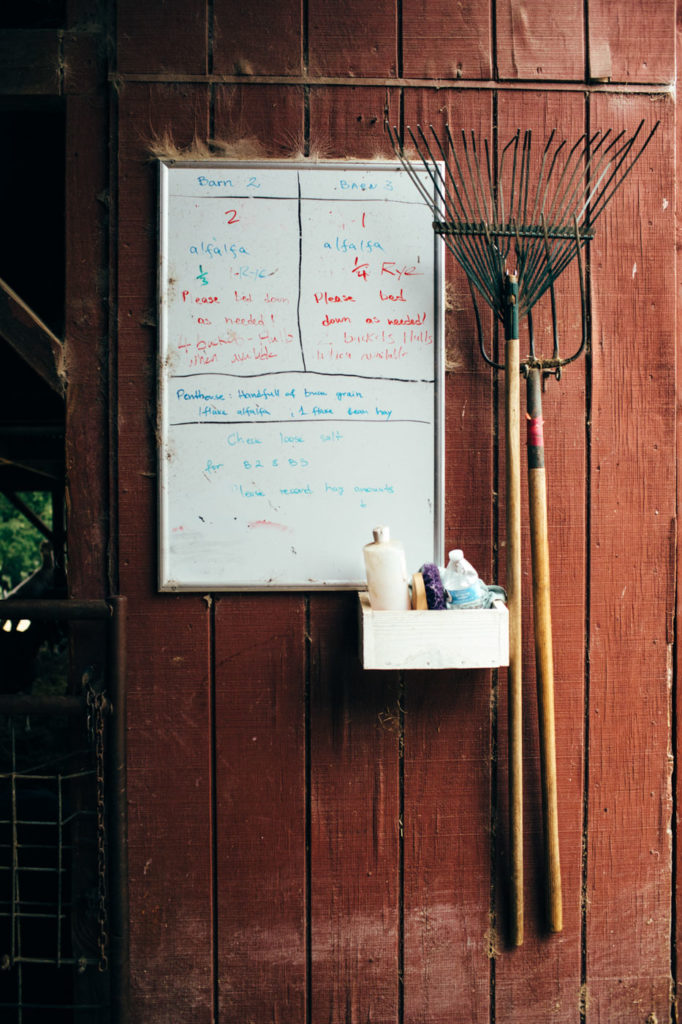
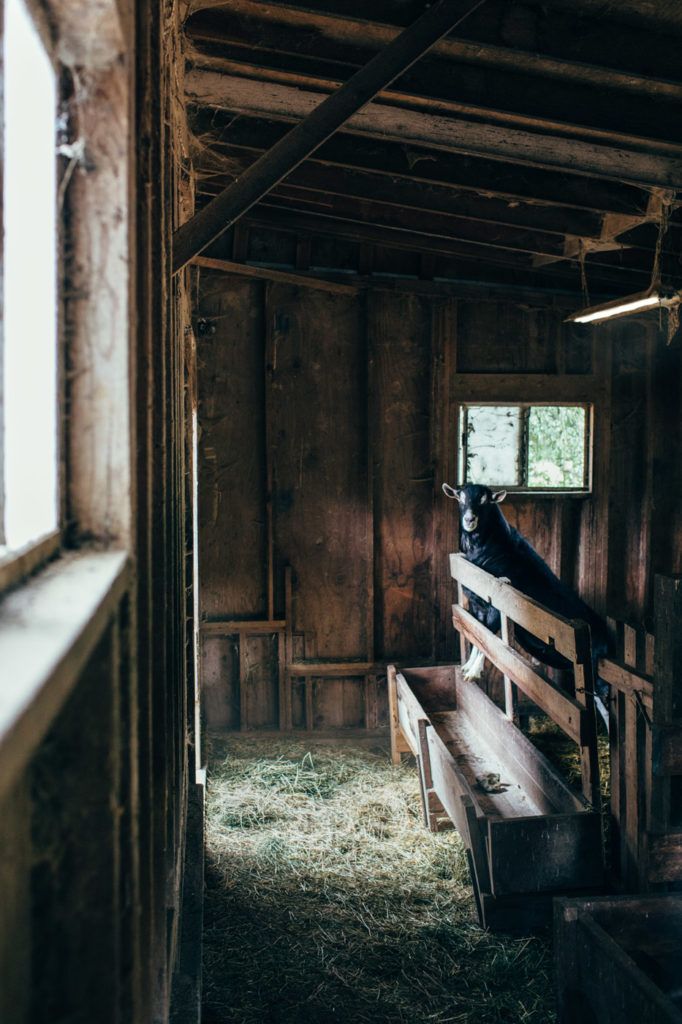
While Sonoma County is known for its agricultural richness, there are a few factors that go into the flavor of goat milk. One element is what the goats eat—a bit like a wine’s terroir. “If goats are eating in a pasture that has a lot of garlic or dandelions, that will come through in the milk,” Jennifer says.
Her goats eat different varieties of alfalfa hay, which has higher protein than most other strains. The farm supplements its feed with rye, oat or bean hay throughout the years, depending on what is available. They also grow tagasaste hay on the farm because it’s drought resistant and perennial
More important than the goats’ diets, however, “is rigid sanitation so there is no bacteria in the milk that can give it an off-flavor,” Jennifer explains. “The beneficial cultures are added to the milk, but if you have bad bacteria, they actually can suppress the good bacteria, so you end up with cheese that can be off-tasting.”
We make our way to the kid barn where the baby goats are kept. It’s a spacious, open-air barn where the newborns have room to discover the world. There are several lanes of young goats, ranging in ages from one to four weeks old. Each area is divided by age groups, and there are hay bales set up so the kids can play.
“They love jumping, and pour their energy into landing on top of the bales, their tiny hooves wobbling. They are very capricious, and they love to run and play,” Jennifer says.
While they don’t breed all of the goats on the farm every year, about three to four hundred kids are born on the farm annually. Each of them are given a name, often themed. “We name them first with our herd name,” Jennifer says. “Then we usually put the father’s name in. The actual call name somehow relates to their mothers. We have a dance line, a flower line, a women’s tennis line, a Star Wars line. It helps us remember the genealogy; but it’s not scientific. It just comes to us.”
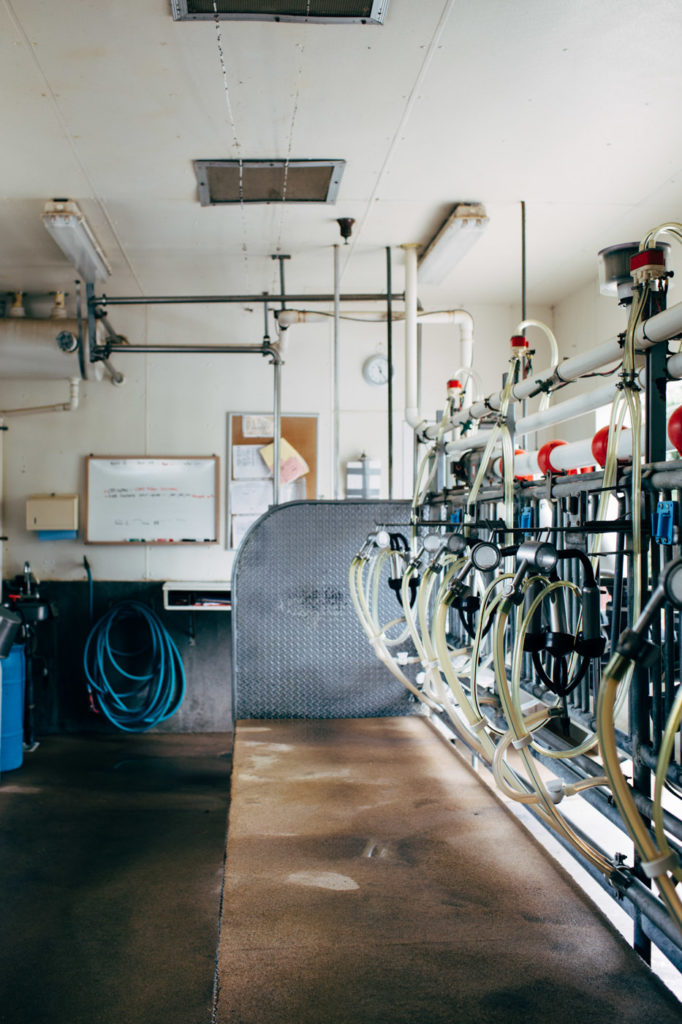

Today, Jennifer is thinking about the future of the farm. “We’re always promoting the goats, but we’ve also been diversifying things,” she says. Jennifer was able to expand Redwood Hill Farm to twenty acres when a neighbor sold the land next door, which allowed her to grow her operation. They now have a beehive from which they harvest honey, and grow olives and hops that are sold to local brewers.
They also installed solar panels, which provides the farm with energy, and water catchment tanks, which collects up to one hundred thousand gallons of rainwater each year—part of their commitment to renewable energy.
“Our property goes down into a dip, which is the Green Valley Creek,” Jennifer says. “It’s a water short area, so we’ll be able to use the water in the summer for irrigation. That will allow us to draw less water from the creek and make it more of a salmon viable area.” The ability to integrate this infrastructure has been important to Jennifer’s philosophy. “We don’t want to be an industrial farm; that’s why we’ve tried to do more.”
She reflects about devoting her life to goats. “I feel really lucky I could make a career out of my life’s passion. Not too many people get to do that, and get to run a business according to their values,” she says. She’s proud of her work to make goats a recognized part of the dairy industry. “They are wonderful animals with personalities. The benefit of the milk is so great as an alternative to cow dairy. They tend to come from smaller family farms, so people can feel good about using the products.”







Our comments section is for members only.
Join today to gain exclusive access.